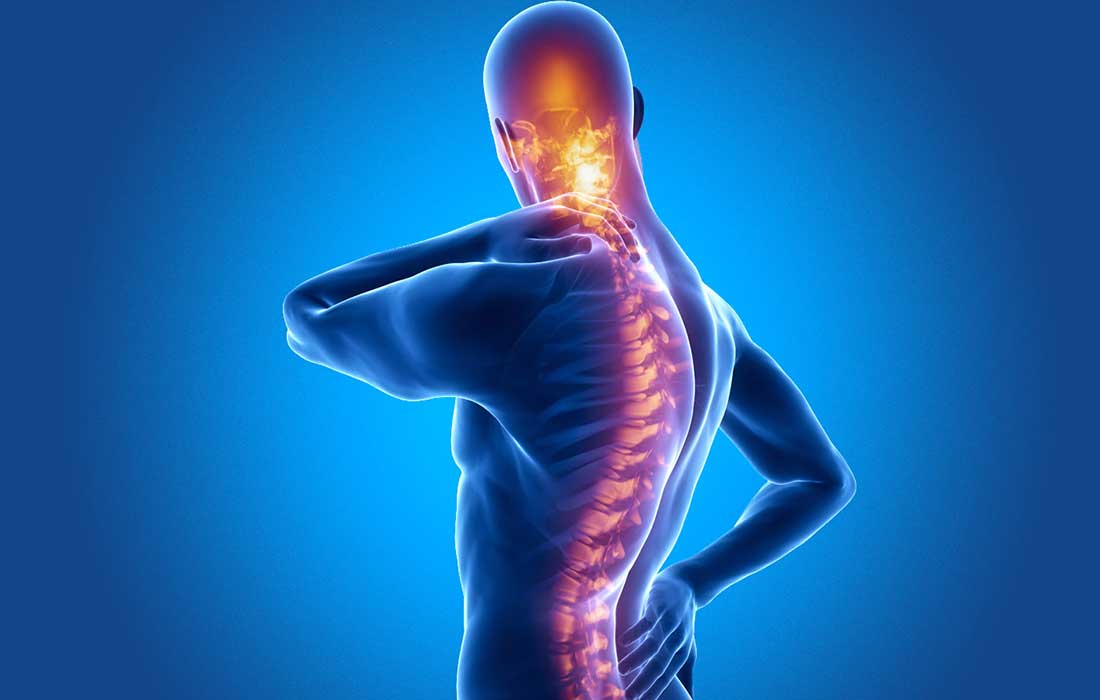
Does Rilassáre’s alternative medicine replace traditional medicine?
No, alternative medicine is a supplement to the treatments that the patient may be taking, and it is not contraindicated in any case due to its safety and lack of adverse reactions or side effects. Alternative medicine helps strengthen your immune system and regulates your body’s acidity for optimal functioning.
What is spondylitis?
It is a form of chronic arthritis. It mainly affects the bones and joints at the base of the spine, where it connects with the pelvis. These joints become inflamed and swollen. Over time, the affected vertebrae may fuse. It is a chronic autoimmune rheumatic disease characterized by pain and gradual stiffening of the joints, with an unknown origin. It typically appears between ages 20 and 40 and mainly affects men. Ankylosing spondylitis is a chronic disease. Diagnosis may occur within one to three years.
Symptoms of spondylitis in adults
Ankylosing spondylitis can cause various symptoms, but they usually include:
- •Neck pain and fatigue.
- •Rarely, it can lead to kidney disease.
- •If the ribs are affected, it may be difficult to breathe deeply.
- •Chest infection.
- •Cardiovascular issues that damage the heart and blood vessels.
- •Spinal fracture.
- •Bone weakness caused by osteoporosis.
- •Inflammation where the tendon attaches to the bone (enthesitis).
- •Pain and swelling in other parts of the body due to joint inflammation (arthritis).
- •Back pain and stiffness, including lower back pain.
Causes and risk factors of ankylosing spondylitis
The causes of this condition are still unknown, but it has been found that people with a specific gene (HLA-B27) are more likely to develop it.
There is no specific treatment to cure ankylosing spondylitis or reverse the damage it causes. However, there are treatments to slow its progression and prevent its development.
Risk factors:
- •Men are more likely to develop this condition than women.
- •It is more common to appear in late adolescence or early adulthood (around age 40).
- •Many people with ankylosing spondylitis carry the HLA-B27 gene, although having it does not guarantee disease development.
Diagnosis of ankylosing spondylitis
During a physical exam, your healthcare provider may ask you to bend in different directions to assess the range of motion in your spine. They may also press on specific parts of your pelvis or move your legs into certain positions to reproduce the pain. They may even ask you to take a deep breath to check for difficulty expanding your chest.
Imaging tests
X-rays allow doctors to detect changes in joints and bones, although visible signs of ankylosing spondylitis may not appear early in the disease.
MRI scans, which use radio waves and a strong magnetic field to produce detailed images of bones and soft tissues, may reveal early signs of ankylosing spondylitis.
Blood tests
A blood test can detect the HLA-B27 gene. However, many people with this gene do not have ankylosing spondylitis, and one can have the disease without having the gene. Therefore, blood tests are not conclusive but may provide clues to the doctor for proper diagnosis.
Treatment for ankylosing spondylitis
The goal of treatment is to relieve pain and stiffness, and to prevent or delay complications and spinal deformity. Treatment is most successful before irreversible damage occurs.
Medications for ankylosing spondylitis
Nonsteroidal anti-inflammatory drugs (NSAIDs), such as naproxen and ibuprofen, are commonly used by doctors to treat ankylosing spondylitis. These medications can reduce inflammation, pain, and stiffness, but may also cause gastrointestinal bleeding problems.
Therapy
Physical therapy is a very important part of treatment and offers several benefits, from pain relief to improved strength and flexibility. A physical therapist can recommend specific exercises for your needs. To help maintain good posture, they may suggest the following:
- •Range-of-motion and stretching exercises.
- •Strengthening exercises for the abdominal and back muscles.
- •Proper sleeping and walking positions.
Surgical treatment for ankylosing spondylitis
Surgery
Most people with ankylosing spondylitis do not require surgery. However, surgery may be recommended if you have severe pain or if a hip joint is so damaged that it needs to be replaced.
Prognosis of ankylosing spondylitis
Overall, the prognosis for ankylosing spondylitis is quite good; patients often remain symptom-free thanks to biological treatments. However, the disease can significantly reduce the quality of life for those undiagnosed or diagnosed late. It tends to have a worse prognosis when it begins at an earlier age. Women usually have a better outcome than men.
Online Doctor
If you would like an online consultation with one of our doctors, click the button below to visit our website www.virtualmedical.com.mx
Visit Site